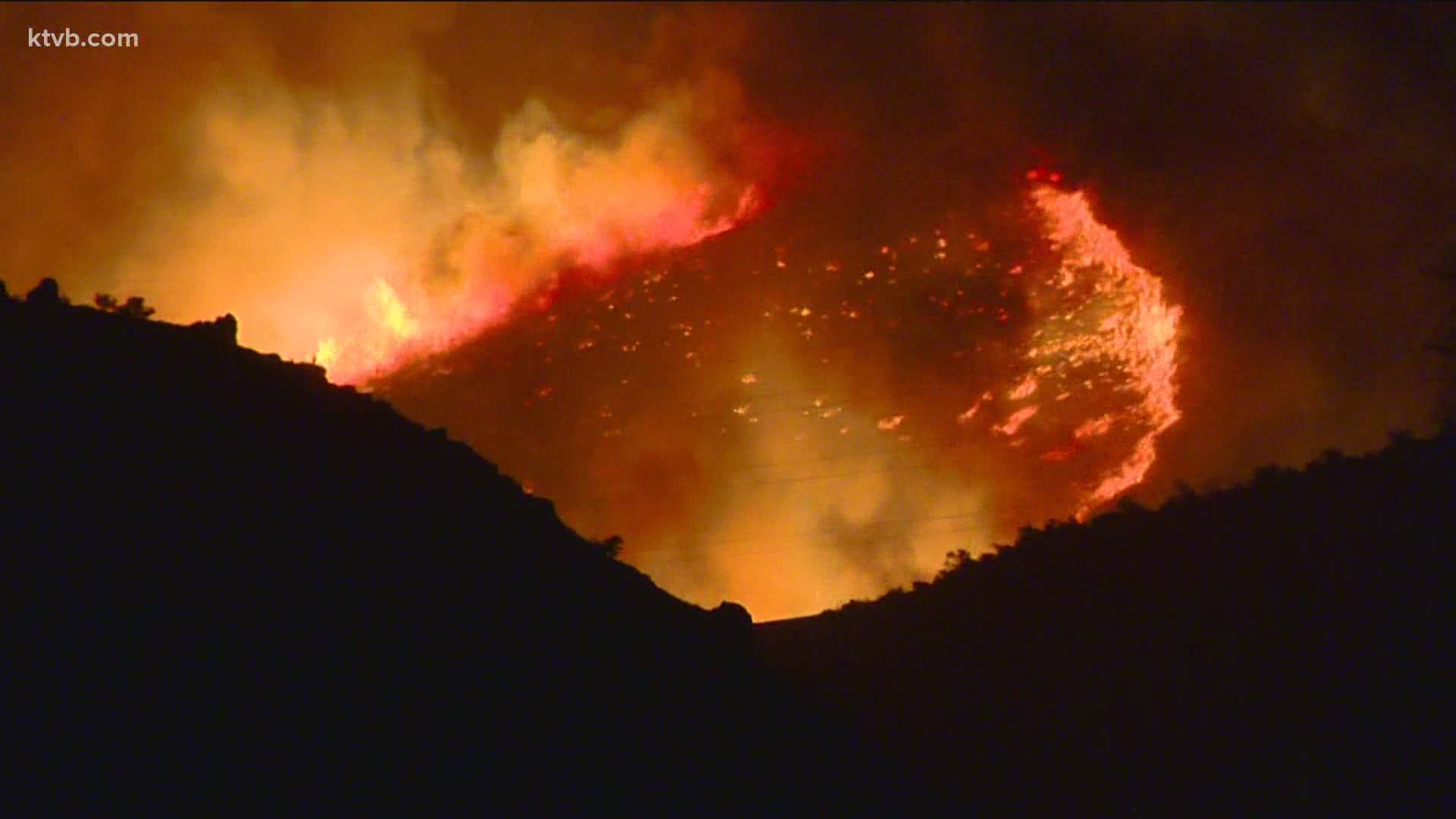BOISE, Idaho — Our typical Idaho fire season is less than a month away, but with precipitation totals around the state below average this year, fire season could come early.
Wildfires of all sizes occur in Idaho every summer.
They can char entire forests, turn open ranges to dust, and oftentimes encroach on our communities, potentially putting you in danger.
The risk for loss is greatest during fire season.
“Fire season varies throughout the country," said Heath Hockenberry, an incident meteorologist for the National Weather Service. "For Idaho, we get into it as early as June, and some really early start years it could persist all the way through mid-September.”
Hockenberry has 20 fire seasons under his belt, and says the state could see an early start this year from a lack of April showers.
“Everything was late last year, so we might have a shift more towards an earlier at least normal season this year," he said.
In 2020, Idaho had 944 wildfires - a mild season, according to the Bureau of Land Management.
Jared Jablonski, a BLM spokesperson for the Boise district, says he wouldn’t be surprised to see more fires in 2021.
While most of the 944 fires last year were human-caused, almost 300 fires were ignited by lightning.
“Right now is really when we need the precipitation, and we’re not getting it.”
Hockenberry says storm systems with very little moisture consistently blow into Idaho from the Pacific in the early summer months. He calls this “breaking the upper-level ridge”, creating the perfect storm for 30% of the state’s wildfires.
“That ridge breaks down, the cold air comes through, we get lightning, we get winds, we get very little rain, and we’re off to the races," he said.
The BLM says areas with the highest risk for fires near homes are “wildland urban interface areas" - areas like northwest Boise and Eagle—bordering the sun-baked foothills. While we may not be able to control naturally caused fires, we can mitigate the threat to our homes through firewise landscaping.
The USDA recommends looking at everything within 100 feet of your home.
Start with your home’s immediate perimeter by clearing the gutters, and any burnable material such as dead leaves and other dry vegetation. Then, work your way toward the perimeter of your property. Your yard should be “clean and green."
Avoid planting clusters of shrubbery, and any dead plants should be removed. This will provide fuel breaks for any fires that may come your way, so it’s important to work with your neighbors to meet these guidelines.
The best time to start these firewise practices is now. Fires could come as early as May this year.
“We’re looking more towards earlier conditions spreading from the southwestern United States through the great basin, so we think fire season is going to arrive early or right on time this year," Hockenberry said.
Watch more on wildfires in the West:
See all of our latest coverage in our YouTube playlist:

